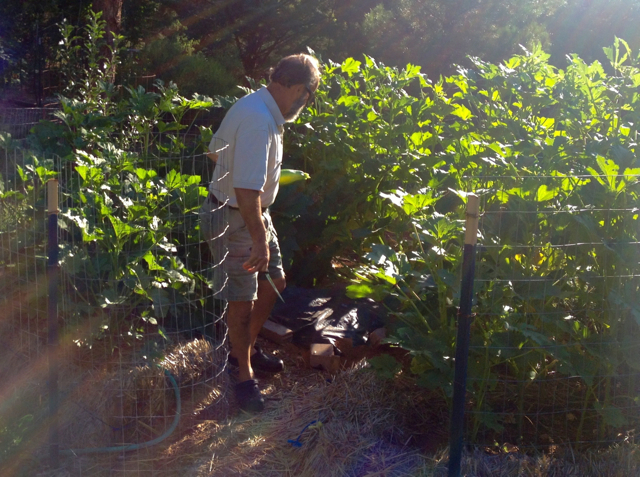
After nursing young plants through the hot dry months of May and June, the onset of the monsoon season is a great relief for gardener and garden alike. Monsoon rains bring a burst of growth to plants that were always on the edge of dehydration unless we watered, watered, watered.
The monsoon rains that produce new vigor in plants has as much to do with the thunder and lightning as it does with the refreshing rainwater. Air is made up of about 78% nitrogen and 20% oxygen, but the nitrogen in the air is not available to plants except with the help of lightning. The heat and electricity of lightning produce nitrogen oxides that fall from the sky and mix with rain, giving the plants a good shot of nitrogen.
Our first Sedona garden was planted on Fourth of July weekend in 1982. Last year, we also planted our summer garden on the Fourth of July. Both years we had good monsoon rains, and our plants seemed to jump out of the ground. Last summer our okra and squash emerged in less than a week from seed, and by August were highly productive.
We have been experiencing mild fall temperatures well into October, so a garden planted in July will produce abundant rewards by the time one is ready to prepare the fall-winter garden.
While we planted much of our monsoon garden from seeds, we also got some healthy organic heirloom tomatoes and some cucumbers in pots from our local garden centers. This made up for not starting our garden in the spring. Succession plantings of beans from seed can continue into mid July as well.
The ornamental garden also benefits from our monsoon season and we enjoy many annual and perennial flowers at that time, and vigorous growth. Monsoon season is an excellent time to plant perennials so that new plants in the landscape have a chance to develop a strong root system before frost and dormancy. The cooler, more humid weather, along with the nitrogen-enriched rain really help the newly planted vegetation get established.
If you collect rainwater in rain barrels, your plants will also benefit from watering with rainwater since they will receive a natural boost of nitrogen. Putting houseplants outdoors during a thunderstorm will also make them greener and lusher.
If one consults the planting guide available on our website home page, one will see that from July through September many vegetables can be started that will continue into the cool days of fall and winter.